Graphics Design
5 Exciting Motion Graphics Trends in 2025 to Transform UX

5 Exciting Motion Graphics Trends in 2025 to Transform UX
Introduction: The Widespread Usage of Motion Graphics in UX
Motion graphics trends if reflecting on the example of how the process of user experience technique’s evolution has developed, I can state that motion graphics are no longer considered as an ornament, but as more fundamental to the business. They now have an essential function in defining how consumer interact with industries’ digital services. This shift happens due to an increasing requirement to adapt interfaces to be more lively, engaging, and easier to use. In particular, when applied properly, motion applies pointers to the interface, reduces interaction confusion, and adds smoothness that static interfaces lack.
I see that contemporary audiences demand not only freezes; they anticipate a smooth transition accompanied by rather pleasing animations and transition effects to help with comprehensibility and satisfaction. Regardless of the fact whether it is the simple hover effect or the smart micro-interaction, the motion graphics trends is a visual call for attention that explains users about the hierarchy and the navigation of the interface of a digital product. Due to this rising need, motion graphics trends design has become a key element of modern-day UX plans.
Perhaps one of the biggest factors for this burgeoning influence is the passion that motion graphics trends are able to foster. In other others, by changing between surfaces simple and complex, including fun, or moving respectively, designers are able to elicit feelings of trust, fun, or satisfaction. Moreover, it raises my level of understanding of how they greatly enhance collection accessibility. For example, the proper choices of animations can shift focus On important aspects or convey information; this saves users’ working memory capacity.
Whether it is a mobile application, e-commerce website, or services’ platform, orgs currently use motion graphics trends to ensure UX corresponds to brands naturally. Movement represents personality, and the tone enhances the user experience, and that is invaluable. Over the years, motion design is no longer an extra that we add — if we want to build meaningful experiences for people, it is crucial. This demand is the foundation for the trends defining UX in the year 2025.
How Motion Graphics Are Essential in Contemporary User Interface/Experience.
When I design user interfaces, I am aware that motion graphics trends are not simple additives; they are strong weapons that will improve the general user experience. Motion helps reveal the purpose, control where attention should go, and provides information about the action’s outcome. Otherwise, these digital systems can seem rigid or, even more disturbing, unresponsive to users.
As such, one of the key areas where motion graphics trends have become quite relevant in the design of UI/UX, is the provision of smooth transitions. For example, micro animations allow customers to move between various points of interest in an application without getting lost. Whenever I use transitions from one screen or state to another it gives the user confidence that his action has been registered. Concepts such as sliding menu or fading in elements or expanding cards are the ones users find natural.
Emotional engagement is also promoted by moving graphics. It seems that they can set the tone and personality in an interface. I have been able to learn that there’s an extra added value of adding little animations such as a bounce effect when a task is done in an application which makes users relate to the application as if it is human.
Motion graphics trends the other advantage I consider is that it is very effective in conveying stories. Complex information or series of activity, for example on-boarding, become palatable through effective motion. Obviously, animated features can help to divide what might appear to be an insurmountable amount of information. Frankly speaking, in my perspective, it will be incomplete to design things without focusing on the users.
That is why motion answers on both requirements that are the very basis of design – clarity and feedback. Suppose you have a button and when you click on it – it turns into a progress bar. That motion not only let me know that the action was successful but also let me know that the system is functioning.
Finally, motion graphics trends touches experiences and makes modern interfaces not only interactivity but liveliness and usefulness.
Trend 1: The Current Approach – Small engagements building cohesive experiences
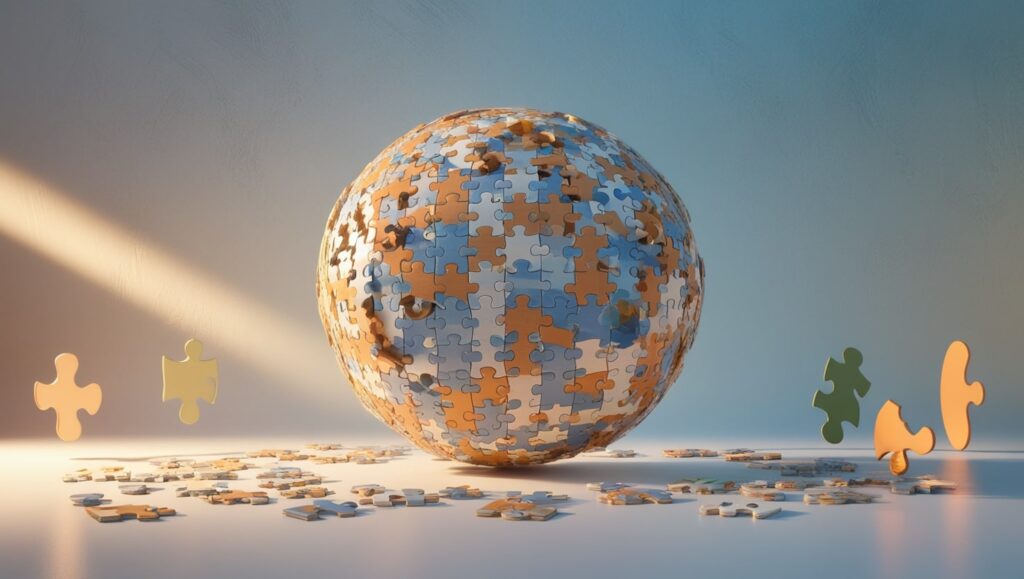
Micro-interactions are now a vital aspect of the user experience design paradigm. When I consider their possibilities in 2025, they look more like not only practical features but also critical motion graphic trends that shift the way many users interact with digital goods. In the form of tiny, goal-oriented animations, these elements help close the gap between a user and an interface, provide context, improve the usability, and add the element of joy to even the most routine of tasks.
Motion graphics trends the use of micro-interactions in designs is sensitive in that. For instance while making a button press or toggle switch press, the animated feedback that I observed can help users in getting cues about actions, such as confirmation of the action performed or a change in state of the switches. Likewise, smooth hover animations over icons or menu items gently lead attention thus controlling movements and making navigation seem unforced. In practise these finer details chopped out elements of friction and add sensibilities to how activity is orchestrated.
What may be of most interest is the way motion in micro-interactions can relate to user emotions. A progress bar that bounces to show that the activity is still going on will reduce the impatience during the loading time. A small shake animation on error screens can gently inform the user about an error, instead of approaching annoyance to have them try to be patient. These micro-interactions vividly demonstrate how sensuous and sensitive design can make machinery become humanlike.
Now, and most significantly, is accessibility, which defines the further development of micro-interactions. I am always impressed as how designers take into account motion cues to help or ease users with some kind of disabilities. Contrasting animated designs, along with feedback, are effective methods of making designs of sites accessible while following visual niftiness.
Motion graphics trends with clarity, engagement, and utility, micro-interactions remain behind the scenes as the silent enablers of UX and a touch of sophistication into routine digital exchanges.
Trend 2: Applications of Dynamic Typography for Better Brand Identity
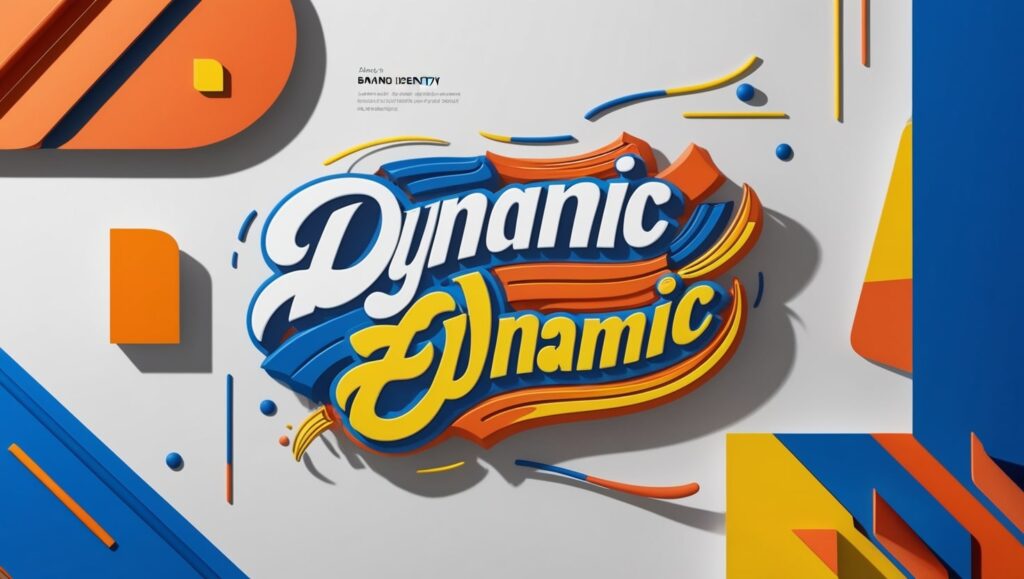
When I identify the new trend of embracing motion graphics trends for UX designs I realize that dynamic type is one of the most valuable assets for designing brand identity and engaging experiences. Rather than using the previous boring fonts I noticed brands using motion rich text as a way of getting attention, reinforcing their messaging and making people have stronger feelings. This is how things look like in 2025, typography is not just an object of effective communication. It is used in narrative and communication process.
Motion graphics trends I have noticed that nowadays brands employ animated typefaces to navigate people through digital experiences. Transitions which are fluid, kinetic texts and also every character animations make content much more alive than when they are static. All of these typographic actions improve legibility and the inherent injection of personality into what feels natural to interfaces. For example, enlarged letters that resonate to the beats on the music app or logos that transform into words, which can be read immediately, are changing paradigm of user engagement with trademarks.
What is rather striking is how precise it has become possible to make some of these things. I frequently observe the approach of customization where typography responds to the users’ actions. Instead, fonts shift depending on contextual factors, which can be good and correctly balanced forbrands associated with luxury, and more powerful or fragmented for innovative IT companies. This is because, ability to relate individual experiences to individual brand make it easier in the adaptation.
Motion graphics trends while dynamic typography is not only applicable to looks. Speaking from a designer’s standpoint it mediates between form and performances. Instead of the use of pop up alarms, it can denote navigation clues or simple provide an error state without the need of a jerk. It is not just that motion and typography overlap to explain intent but that their union appears of its nature to be human. This trend in 2025 challenges the communication strategies to become more immersive so that brands give their best effort and mimic the consumers’ digital experiences.
Trend 3: Project 2 – 3D Motion Graphics for Enhanced User Experience

Taking about how to make users engaged in the experience, I think that 3D motion graphics can hardly be beaten nowadays. While prior to they were just considered a sophisticated design tool, they were able to evolve into an essential requirement when it comes to creating engaging contexts to the users. Thanks to depth, realism together with interactivity which 3D motion graphics provide, I can switch between still images and a moving plot.
I believe that 3D motion graphics trends offer the greatest benefit in terms of improving product engagements. In this case, I can add features such as User can rotate, zoom or even disassemble a given product virtually. Engaging users is always great, especially when you are in a position of having to explain intricate information. In e-shops and other product presentations this detailed and realistic visual imaging creates confidence and gives user a touch-and-feel experience without touch.
Third, 3D motion graphics trends allowed me to present the information in an easily understandable form. Each animation is lifelike, and the animated 3d models can enable easy explanation of a concept such as the architecture plan, data analysis or even scientific diagrams. I find this particularly useful especially for markets such as technology, healthcare and education because simplifying complexity is key here.
The increase in the emergence of new hardware technologies such as, virtual reality and augmented reality devices also supports this line of thought. To this I add 3D motion graphics trends in the context of applications that I develop and where AR enables users to transition from reality into applications space. For instance, in interiors, motion-triggered 3D guides within the built environment or making pedestrian step by step instructions as engaging as AR.
Motion graphics trends in the end, I believe that the constant improvement in 3D rendering engines along with accessible computer power and designing tools, necessitates this trend to bestow highly innovative UX. Even myself and other experts in this particular field appreciate that these innovative designs not only engage the target spectators, but also enhance interactivity and functionality. Through this trend, I guarantee more users and memorable experience.
Trend 4: AI Basics and Explanations of AI Generated Graphic Animations and Other Personalized Motion Graphics
AI takes precedence over traditional design patterns; I have noted a revolution in how motion graphics trends is transforming with the help of AI. AI now drives animations that enabled designers to user-interactive design value-added and actualized animated masterpieces that follow up users’ behaviors. While these animations move on the interface like traditional static animations, the motion fragments implemented in these AI designs use machine learning to study users’ interactions to adjust motion aspects.
Probably one of the most interesting uses that I have come across is the use of predictive analytics. For example, AI can understand ahead of time that a user wants to see more exciting things or needs a break and then move the visuals, effects and plot to reflect those preferences. This makes experiences not only bright and vivid but also spiritual and affecting on the personal level.
Motion graphics trends moreover, I see how generative AI tools are making work more efficient more daily to use than ever expected. They can create detailed animations from a simple sketch or even just from a text description and this will take significantly less time than when designing it manually. With the help of NLP and VS designers have a great opportunity to work more effective for example to try new ideas or to fine tune the existing ones.
Here’s how AI-driven animations are transforming motion content:
- Behavioral Adaptation: As done by AI analysis of user characteristics the animation sequences could be changed in real time according to user’s intentions or mood.
- Heightened Immersion: Real-time personalization provides that each client receives content s/he is interested in regarding motion, thus creating an emotional appeal.
- Increased Accessibility: AI can be applied to automatically generate captions, audio descriptions, and improve easier use of animations for as many as possible.
I believe this personalization argument is not restricted to marketing alone. Promotional visuals that come from motion graphics trends can be further customized for segments with the help of artificial intelligence. The result? The traditional media enables brands get closer to the audience and engage with them at a more personal level. These technologies are becoming incorporated into the fabric of our society and I see no reason why design will only just move.; it will react, vibrate and hum in sympathy with each observer.
Trend 5: For utmost simplicity and anonymity, let’s explore Abstract and Minimalist Motion Design.
Over time, I envisage the trends in motion graphics trends as consistently moving upwards when considering the aesthetics of refinement, and it is such trends as modernization of abstract and minimalistic forms that can underscore this movement. This trend is not about removing features – it is about making uncomplicated the graphics to make them louder. In using curves, transitions and even negative space, I understand how designers are starting to redefine complicated concepts in simple forms.
One strategy within this trend is to draw such abstract things as geometric forms or floating gradients to indicate ideas instead of their proximal visual counterparts. For instance, pulsing circle can represent the loading status without overloading an attention of a user. Other such designs make functions less demanding on the users’ intellect and enable the audience to follow essential content alongside the message in animation.
Most minimalist motion graphics trends also merges restraint and precision. Instead of large sweeping movements across the stage or over-exaggerated effects I’m starting to see micro-interactions on the rise. A small jump for a button press or a slow gentle slide for switching between the screens results in an uninterrupted user experience. These issues maintain the motion graphics trends utilitarian, however, add a sleekness to a user interface.
This is why clean typography works in tandem with this look as well. I would change compound motion graphics trends which are usually informed in intense illustrations, with slide in/out or fade in/out text animations. Reducing typographic motion graphics trends makes it easy for the user to follow along on the message without a lot of hindrances along the way.
Since tools are more available and able to produce these minimalist effects, I think this trend is wholly in line with creating simple, user-centered digital environments.
Motion graphics in accessibility and inclusion
As I try to analyse contemporary media environment in terms of animation, I observe an important shift in the role of motion graphics trends as it pertains to it: their specifically important role is expanding to include accessibility as well as inclusiveness. If done right, motion design goes beyond being purely aesthetic – it intervenes in the way people comprehend it and learn to utilize it, especially those who may be different, have disabilities, or have different ways of engaging with something. For me, this shifts the paradigm from motion graphics trends that are engineered to be frivolous, and are instead designed to be meaningful and inclusive for all as we build digital spaces for all people.
Motion graphics trends some of the areas stated are; the need to ensure that interfaces in this space are cognitively optimal. For example, specified animations such as a progress bar or button state or even between page/section transitions can be informative for a user. I also note that these elements are very helpful for neurodiverse audiences, as they convey the next steps and help to save the audience’s brain energy. An animation done this way plays more like a signal where interacting feels normal and intuitive.
However, I understand that motion has to be at an optimal level so that it doesn’t overexcite the audience. Extreme or fast animation can be dangerous* as far as for persons with vestibular problems or photosensitive persons. Measures which include the option of low movement mode or the setting of particular motions pace enables the user to set his preference. For me, this is one of the key points in inclusive motion design.
As for the opportunities, I can think of is applying motion graphics trends as a way to support text media to make the content more accessible. Relatively low resource, loop animation can enhance the garnish of the key points; likewise, animated sign language interpreters or captions will introduce diverse communication accessibility to video media.
Motion graphics trends I think while designing with accessibility in mind, it will be helpful to run animation in front of people with disabilities and with the help of accessibility tools. This way, I can make sure that the designs again cater for multiple interactions, Assistive Technology (AT), giving equivalent of text descriptions for animated objects.
How Smaller Delays in Animations Affect the Users

When I examine the role animations play in user experience, one insight stands out: responsiveness is a determinant of perceived quality in interaction since it determines the impression users have about an interaction. In the case of motion graphics trends, any kind of delay can become problematic because they imply to users a certain level of friction. On the other hand, cutting down on such delays gives the impression that the people interacting are right next to each other. Psychological effects are strongly interlinked with the perception of the speed of the animation; even if the animation looks nice looking – when it is slow, it breaks the user’s focus and their patience.
Motion graphics trends something that I have realized is that the user automatically benchmarks an app’s performance against their mental model regarding smoothness. In an interface, animations should complete in a span of anything that falls between 200 and 300 milliseconds. Any amount over this is likely to cause idle, which is irritating The controller must remain as smooth as possible; if not, then frustration sets in. While reducing transition time to just a little bit, I am capable of providing a momentum corresponding to the users’ expectations. Also, research confirms this – application’s performance in terms of swift and seamless visuals does sway users’ impression positively.
But there is also a dose of feeling that comes into the equation. Fast paced and intentional animation offer an effect of trust and competency and people are more likely to spend time on the site and buy the product. For instance, respondents mentioned simple hover-state animations, or micro-transactions that inform users they are in control, and this translates to retention. On the other hand, long load animations, which may be designed to look like load in-progress indicators, will only give an impression of inefficiency.
Motion graphics trends in practical terms, what it means for the organization to minimize the time taken as much as possible does not imply to remove delay factors completely. I put considerable effort in perfecting the crossing points; in fact, it should not be too swift as to disorient the audience but not too slow as to cause too many frames. Such balance is crucial in terms of user retention and changing them into distinctive consumers, especially if the competition within the platform is high.
Tools and Technologies Revolutionizing Motion Graphics in 2025
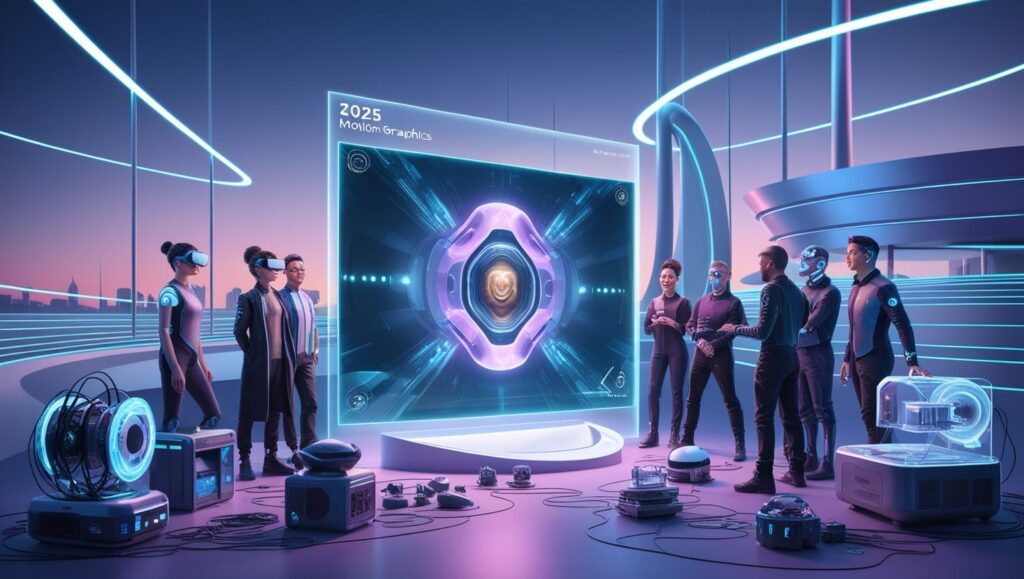
When I look at the current landscape of motion graphics trends, it’s clear that the tools and technologies shaping the field have undergone a remarkable transformation, with 2025 setting the stage for groundbreaking innovations. From AI-powered design platforms to real-time rendering engines, these advancements are redefining how designers approach storytelling, engagement, and user experience.
1. Artificial Intelligence in Dynamic Design
The integration of AI has reached an unprecedented level, automating repetitive tasks and enabling me to focus on creativity. AI tools now predict motion graphics trends patterns, assist with auto-keyframing, and suggest styles tailored to user personas. Platforms like Runway and Adobe Firefly have deepened their generative AI capabilities, making rapid prototyping more intuitive than ever.
2. Real-Time Rendering Engines
I can no longer imagine motion graphics trends today without the use of real-time rendering engines like Unreal Engine 5 and Unity. These have set an industry standard for hyper-realistic effects and seamless animation. What excites me most is how real-time game engines are crossing over into traditional industries, empowering motion designers to deliver immersive environments in record time.
3. Collaborative Cloud Platforms
Motion graphics trends teams are leveraging next-gen collaborative tools, such as Adobe Creative Cloud’s new AI-driven motion tools and Figma’s motion plugins. These platforms allow me and my team to co-create animations in real-time, share instant previews with stakeholders, and eliminate versioning chaos altogether.
4. Procedural Animation Software
Procedural motion graphics trends tools like Houdini have seen significant updates in 2025, enabling me to generate complex animations driven by algorithms. These tools are invaluable for crafting intricate particle systems, liquid simulations, or environment-based effects that would take countless hours to animate manually.
5. XR and Motion Graphics Integration
As extended reality (XR) continues to dominate, I’ve noticed a tight coupling between motion graphics trends and AR/VR ecosystems. Tools like Blender’s viewport for VR simulation and AR-specific plugins within After Effects are helping me create interactive, immersive experiences that transform user engagement in tangible ways.
With these tools, the possibilities for motion graphics in 2025 are limitless.
Conclusion: Designing the Next Era of User Experiences with Motion Graphics
When I think about the potential of motion graphics trends to redefine user experiences, I see a transformative tool that deeply enhances how users interact with digital products. Motion graphics have surpassed their role as aesthetic embellishments; they now act as a functional layer essential to communication and engagement. The trends emerging in 2025 provide a lens into where this evolution is heading and highlight how designers can harness motion to make interfaces intuitive, seamless, and delightful.
One key innovation I’ve observed is the increased use of micro-interactions. These small but impactful animations guide users intuitively, helping them understand feedback, affordances, and navigation cues within an interface. I recognize that these subtle animations can reduce cognitive load and make learning new applications effortless for users.
Another area I find revolutionary is the use of dynamic transitions in storytelling. By creating movement between states or screens, motion graphics ensure continuity of experience. Whether transitioning from one menu to another or expanding content, they visually connect moments to maintain user flow.
Additionally, I see motion graphics trends becoming integral to showcasing personalization. Adaptive animations, tailored to user behavior or preferences, not only offer a sense of customization but also improve accessibility by aligning with individual user needs.
As I look to the adoption of immersive interfaces, animation within augmented and virtual realities is taking center stage. Motion creates spatial awareness, enhances interactivity, and makes these emerging platforms more intuitive for users, ultimately leading to heightened engagement.
The era I’m observing in 2025 demonstrates how pivotal motion graphics trends are in crafting meaningful, memorable user journeys.
Graphics Design
Top 10 Best Graphic Design Tools for Beginners in 2025 (Free & Paid)
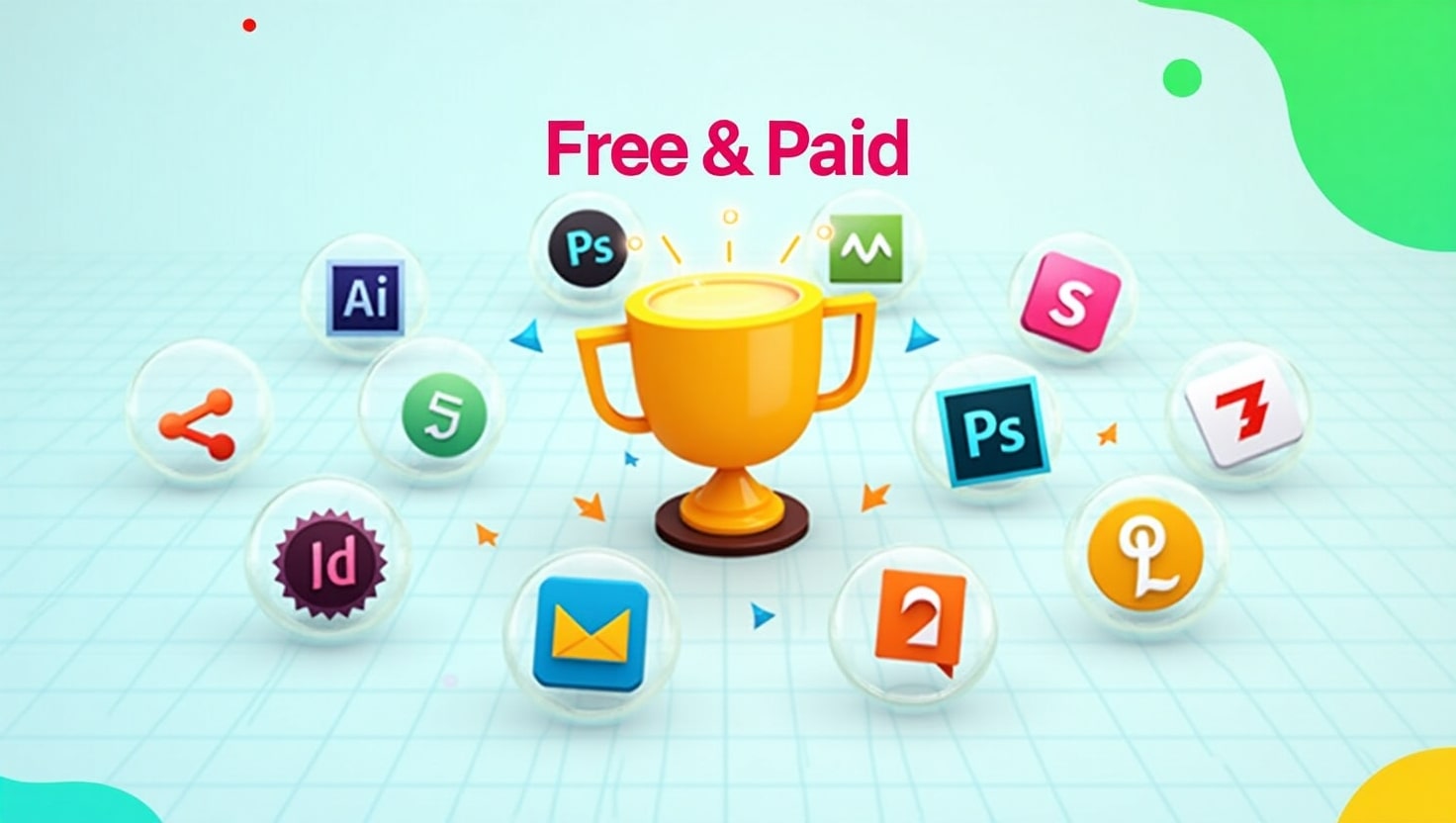
Top 10 Best Graphic Design Tools for Beginners in 2025 (Free & Paid)
Introduction: Why Beginners Need the Right Tools
Best graphic design tools for beginners can be exciting but also overwhelming. With so many tools available, it’s easy to get lost in the options. As a beginner, you need graphic design tools that are easy to learn, affordable, and feature-rich enough to help you grow. Whether you’re designing logos, social media posts, or website graphics, the right software can make all the difference.
In this article, we’ve handpicked the top 10 best graphic design tools for beginners in 2025, including both free and paid options. Whether you’re looking to go pro or just explore your creativity, there’s a tool here for you.
1. Canva – Best for Simplicity
Type: Free & Paid
Platform: Web, iOS, Android
Canva is best graphic design tools for beginners who want to dive into design without the steep learning curve. With drag-and-drop features, pre-made templates, and an intuitive interface, Canva allows anyone to create professional-looking graphics in minutes.
Key Features:
- Thousands of free templates
- Easy-to-use interface
- Perfect for social media posts, presentations, and posters
- Team collaboration options
Why it’s great for beginners: You don’t need design experience to use Canva. It’s as simple as choosing a template and customizing it.
2. Adobe Illustrator – Industry Standard
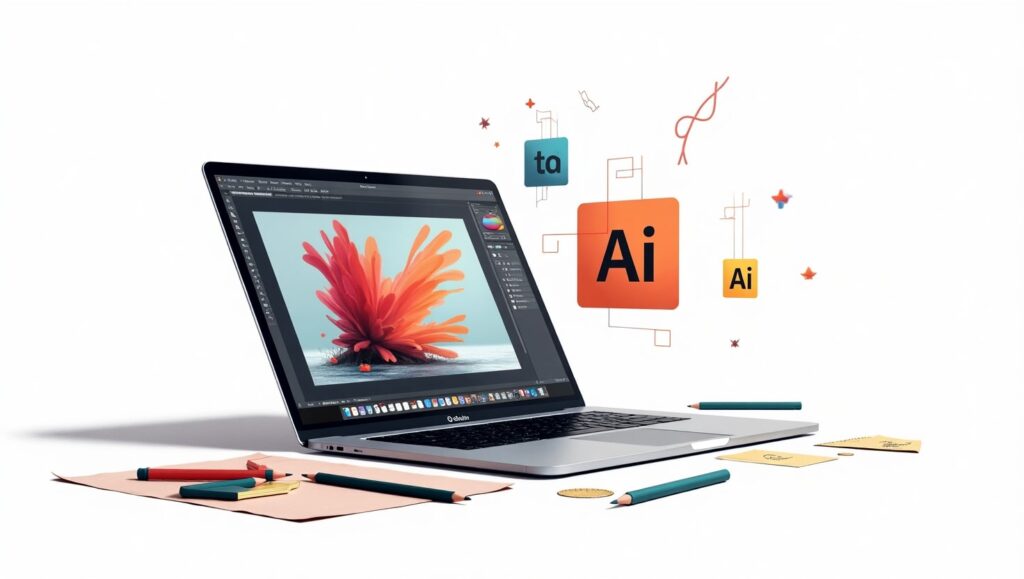
Type: Paid (Free trial available)
Platform: Windows, macOS
If you’re serious about pursuing best graphic design tools for beginners professionally, Adobe Illustrator is the go-to tool. It’s used by top designers around the world for creating logos, icons, typography, and complex illustrations.
Key Features:
- Precision vector design
- Integration with other Adobe apps
- Extensive typography tools
- Custom brushes and effects
Why it’s great for beginners: Though it has a steeper learning curve, beginners can start with tutorials and gradually master this powerful tool.
3. Figma – Collaborative Design

Type: Free & Paid
Platform: Web-based (with desktop apps)
Figma is a browser-based UI and best graphic design tools for beginners that’s widely used for interface design and collaboration. It’s especially ideal if you’re working in a team or planning to get into UX/UI design.
Key Features:
- Real-time collaboration
- Cloud-based autosave
- Works on any platform
- Design + prototyping in one tool
Why it’s great for beginners: It’s free to get started and encourages team-based design, which is perfect for learning in a group setting or classroom.
4. Gravit Designer – Browser-Based Versatility
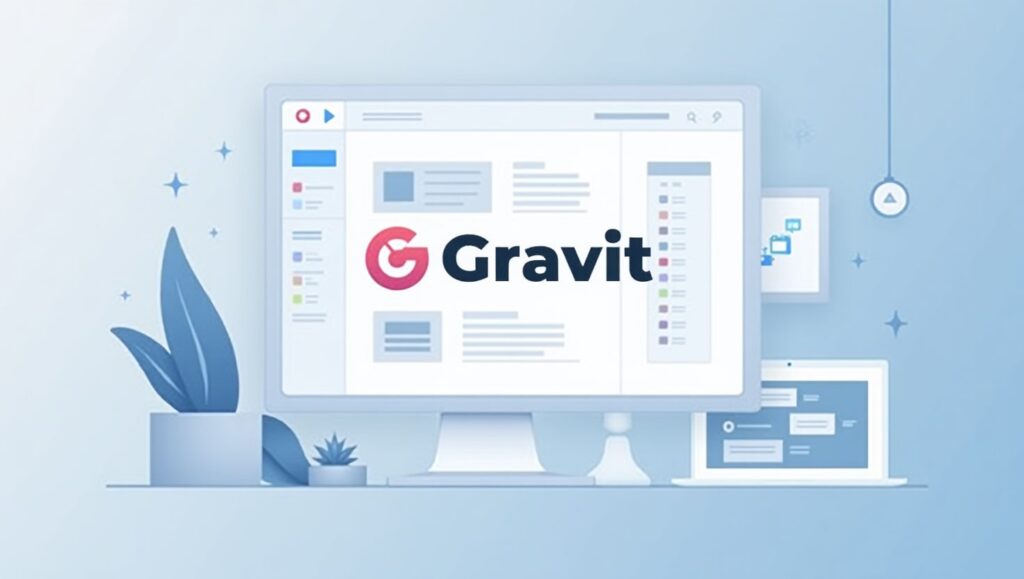
Type: Free & Paid (Gravit Designer Pro)
Platform: Web, Windows, macOS, Linux, Chrome OS
Gravit Designer offers a clean interface with essential tools for vector design. It’s ideal for creating UI designs, presentations, and illustrations, all from your browser.
Key Features:
- Works online and offline
- Modern user interface
- Cloud syncing
- Easy export options
Why it’s great for beginners: The learning curve is gentle, and it doesn’t require a powerful computer to run.
5. Vector – Free Vector Tool
Type: Free
Platform: Web, Windows, macOS, Linux
Vector is a completely free vector graphic design tool with a simple interface. It’s great for basic logos, icons, and infographics.
Key Features:
- Real-time sharing
- Simple and clean interface
- Free tutorials available
- Lightweight and fast
Why it’s great for beginners: Best graphic design tools for beginners without getting overwhelmed by advanced features.
6. Inkscape – Open Source Alternative
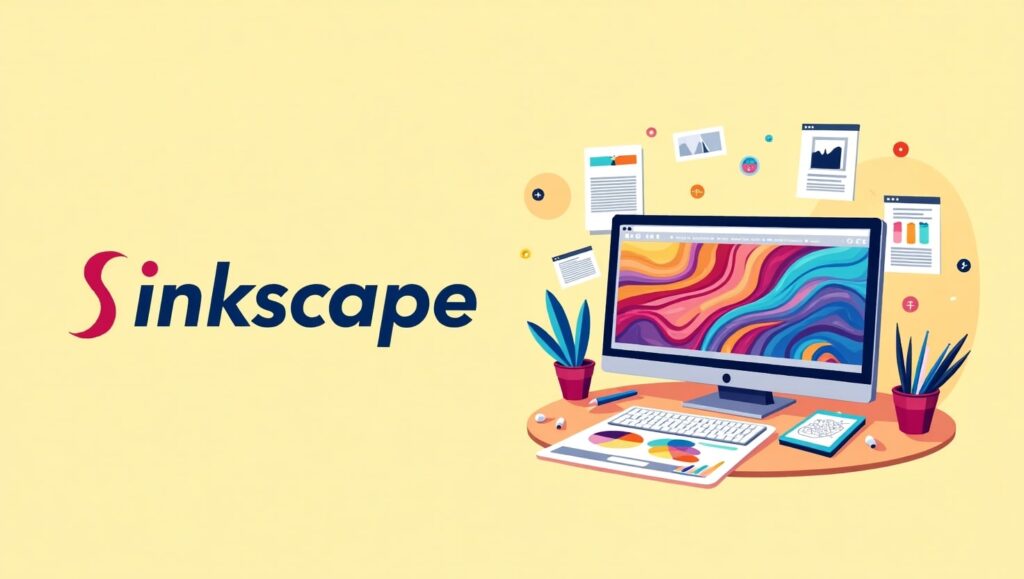
Type: Free (Open source)
Platform: Windows, macOS, Linux
Inkscape is a powerful free vector graphics editor that’s often compared to Adobe Illustrator. As an open-source tool, it has a strong community and regular updates.
Key Features:
- Advanced drawing tools
- Layer support
- File compatibility (SVG, AI, PDF)
- Custom extensions and add-ons
Why it’s great for beginners: Great for those who want full control over their design tools without paying for software.
7. Affinity Designer – Professional Quality at One-Time Cost
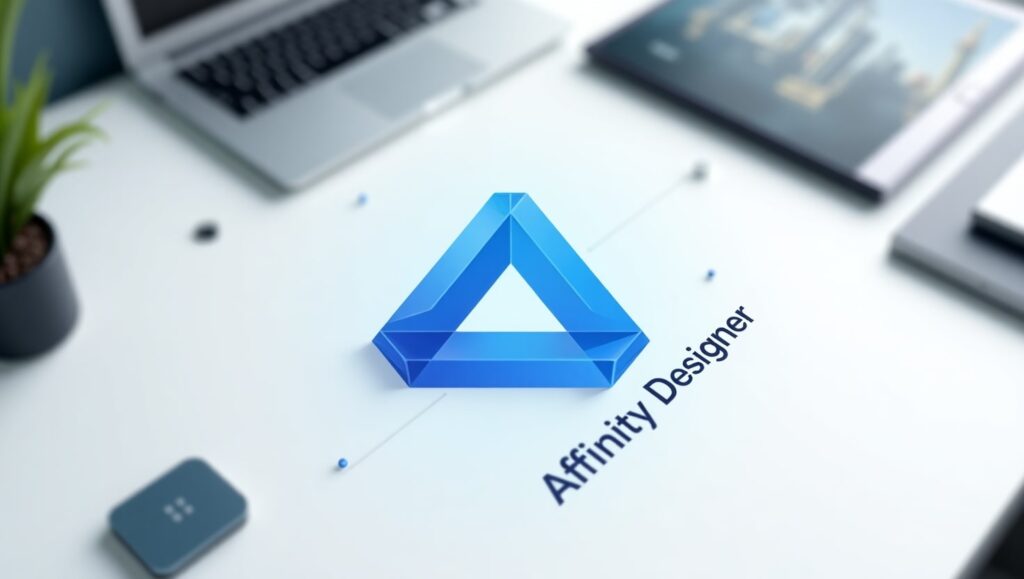
Type: Paid (One-time purchase)
Platform: Windows, macOS, iPad
Affinity Designer is a cost-effective alternative to Adobe Illustrator, offering professional features at a one-time price.
Key Features:
- Smooth vector and raster integration
- Responsive and lightweight
- Grid, snapping, and alignment tools
- Cross-platform performance
Why it’s great for beginners: Once purchased, you get lifetime updates. It’s a great investment without a subscription.
8. Pixlr – Easy Photo Editing
Type: Free & Paid
Platform: Web, iOS, Android
Pixlr is a lightweight photo editing tool that runs right in your browser. It’s perfect for beginners who want to edit images quickly for social media or blogs.
Key Features:
- AI-powered one-click edits
- Web-based—no downloads required
- Supports layers and effects
- Simple interface
Why it’s great for beginners: You can start editing without creating an account. Very beginner-friendly.
9. Krita – Digital Painting & Illustration
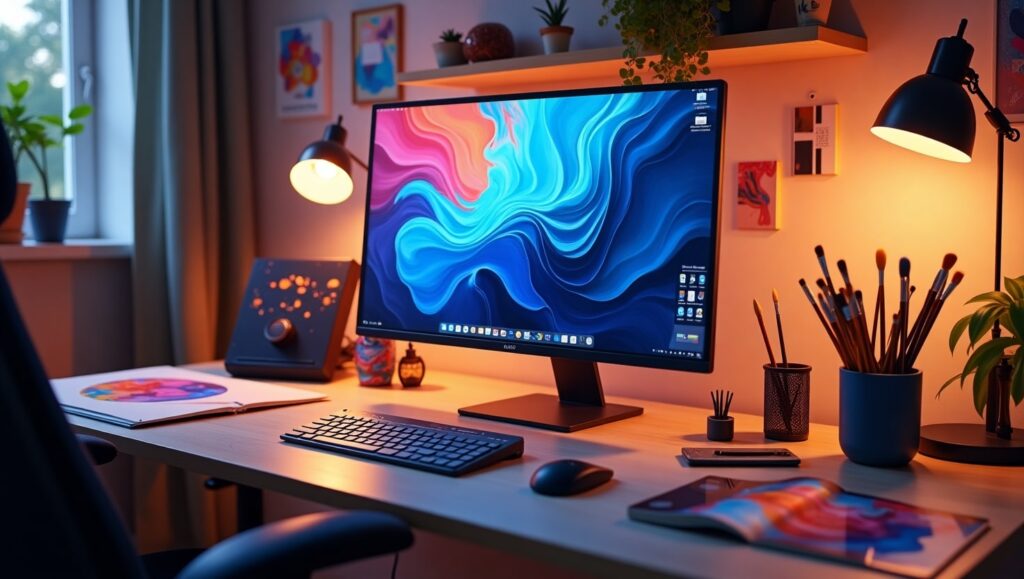
Type: Free (Open source)
Platform: Windows, macOS, Linux
Krita is best suited for digital illustration and painting, but it also offers graphic design tools for layout and composition.
Key Features:
- Brush customization
- Layer management
- Animation support
- Tablet-friendly interface
Why it’s great for beginners: Excellent for beginners interested in drawing and concept art.
10. Desygner – Mobile-Friendly Graphic Design
Type: Free & Paid
Platform: Web, iOS, Android
Desygner is a drag-and-drop graphic tool aimed at social media creators, bloggers, and marketers. It’s one of the easiest tools to use on a smartphone.
Key Features:
- Pre-made social media templates
- Mobile-first design
- Royalty-free image library
- Branding kit support
Why it’s great for beginners: If you’re creating graphics on the go, this is a must-have.
Tips on Choosing the Right Tool
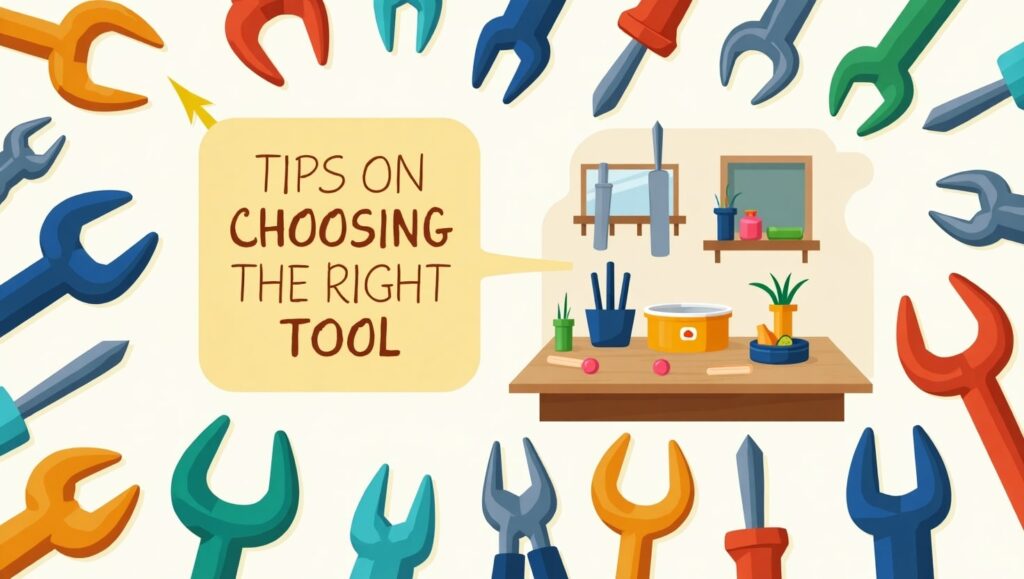
Choosing the best graphic design tools for beginners tool depends on your goals and workflow. Here are a few tips to guide your decision:
- Start Free: Explore tools like Canva, Vectr, and Inkscape to learn the basics without investment.
- Consider Your Goals: If you want to go professional, tools like Adobe Illustrator or Affinity Designer are worth learning.
- Try Before You Buy: Use free trials to test paid tools before committing.
- Use Community Resources: Many tools have active communities, free tutorials, and forums to help you learn faster.
- Match Tool to Task: Photo editing? Use Pixlr. UI design? Try Figma. Logo creation? Go with Illustrator or Vectr.
FAQ
What is the best free graphic design tool?
Canva is the best graphic design tools for beginners widely considered the best graphic design tools for beginners due to its ease of use, professional templates, and accessibility on all devices. For vector design, Inkscape is a top free choice.
Are paid tools worth it for beginners?
Yes, Best graphic design tools for beginners if you’re committed to building a career or serious hobby in graphic design. Tools like Adobe Illustrator and Affinity Designer offer features you’ll eventually need as your skills grow. However, you should explore free tools first to see what suits your style.
Conclusion: Start Simple, Grow Gradually
Every graphic designer starts somewhere. The key is to start simple—best graphic design tools for beginners, explore its features, and grow your skills at your own pace. Whether you begin with Canva, dive into Figma, or experiment with Inkscape, the most important thing is to keep creating.
Once you’re comfortable, consider investing in professional tools that open up even more creative possibilities. With the right tools and consistent practice, you’ll be creating stunning graphics in no time.
Graphics Design
Top 7 Essential Ways to Make T-Shirt Painting Design
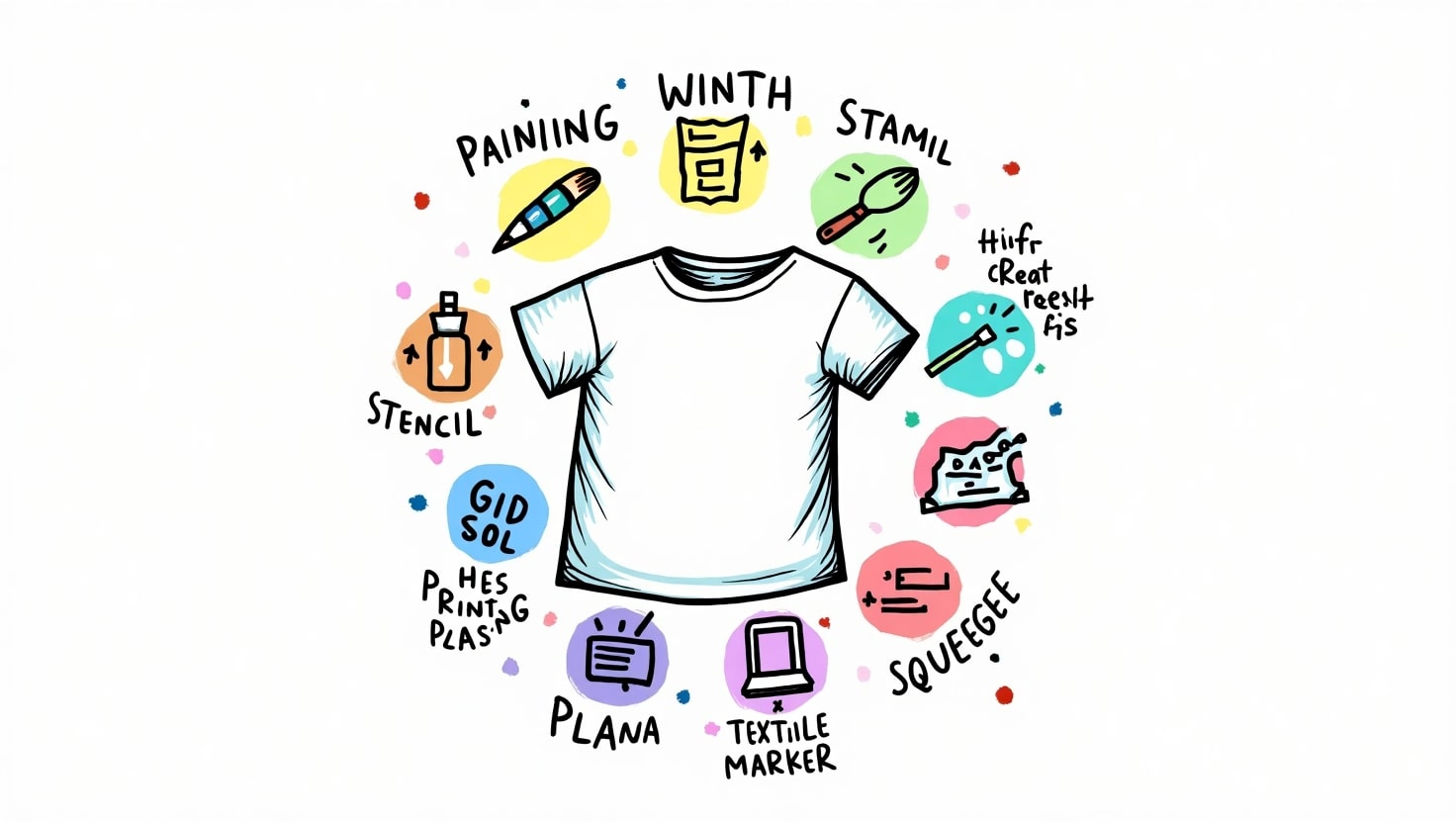
Top 7 Essential Ways to Make T-Shirt Painting Design
T-Shirt Painting Design can be a great tool of creativity or creation of a fashion identity or even a business. T-Shirt Painting can be a gateway to unending crafts no matter whether this would be your first or fourth attempt in painting. In this article, we are going to guide you on the 7 best methods on how to make t-shirt painting design stand out, how to do it, what to use, what style, and some tips on how to make custom t-shirt painting better without fail.
What is T-shirt Painting Design?
T-Shirt Painting Design is a decoration process of painting or ink on a piece of cloth, generally t-shirt, to come up with a unique picture. It is a form of clothing art in which an artist, fashion admirer or hobbyist can express themselves creatively in something that they can use daily. T-shirt painting design can express mood, culture, personality and even be used to champion a cause; miniature paintings to splashes of abstract colors.
DIY trend, sustainability and fashion individuality have rocketed the popularity of the t-shirt painting within the past years. Well, now we are to see the seven most useful techniques that can help you to master this exciting art.
1. Select The Appropriate T Shirt Base and Fabric
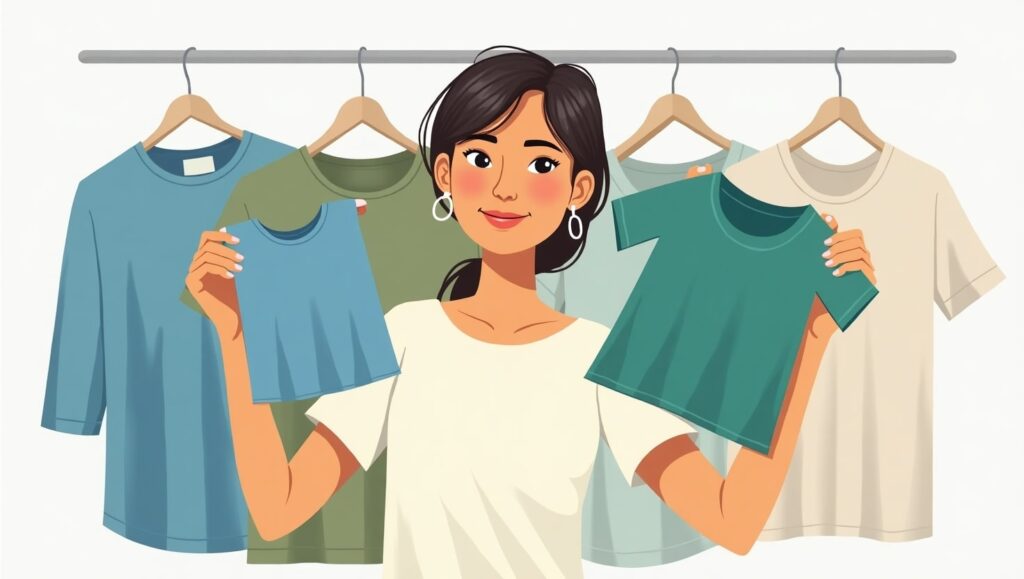
A t-Shirt Painting Design is the basis of every magnificent t-Shirt Painting. The choice of the material influences the quality of the adhesion of the paint, the hues of the palette and the durability of the design once washed.
The ideal fabrics of T-Shirt painting design:
- 100 percent Cotton: Trapping moisture is high on the scale and paint adhesion can also be achieved as well.
- Cotton-Poly Blend: Less absorbent and more long lasting.
- Bamboo or Organic cotton: an environmental-friendly and sustainable t-shirt painting design material.
Ensure that the t-shirt has already undergone a process of washing in order to draw away any factory treatment or shrinking. Get the finest painting experience on a smooth, non wrinkly surface.
2. Gather the Right Supplies
Without proper tools, even the most creative ideas for a t-shirt painting design can fail. Here’s a checklist of essential supplies:
Basic Materials:
- Fabric Paint (Acrylic-based or Water-based)
- Fabric Medium (optional, helps paint bond better)
- Paintbrushes of varying sizes
- Sponges or Rollers
- Palette or Mixing Tray
- Fabric Markers
- Pencil/Chalk (for sketching)
- Cardboard Insert (to avoid bleed-through)
These materials ensure your t-shirt painting design stays sharp, professional, and vibrant.
3. Sketch and Plan Your Design
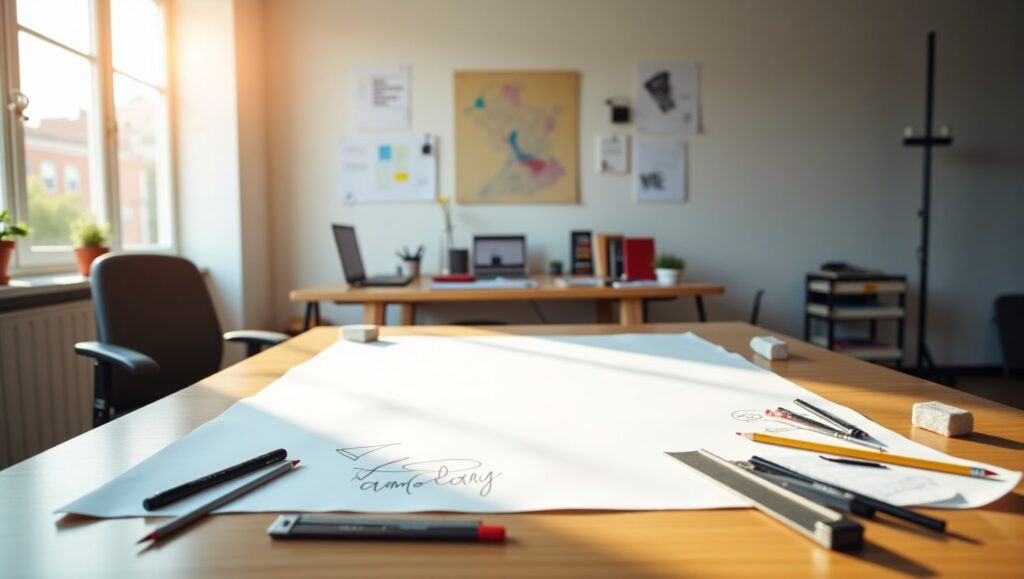
Before you dip a brush into paint, sketch your t-shirt painting design on paper or use a digital mockup tool. Planning is critical, especially for intricate designs.
Tips for Sketching:
- Start with light outlines.
- Consider color placement and negative space.
- Use stencils if you’re aiming for precision.
Planning your t-shirt painting design reduces mistakes and speeds up the painting process. You can even use transfer paper to trace your design onto the fabric if you’re not confident in freehand sketching.
4. Learn Different Painting Techniques
There are multiple ways to apply paint to a t-Shirt Painting Design. Understanding the right technique for your t-shirt painting design will make your artwork more dynamic.
Popular Painting Techniques:
- Freehand Brush Painting:
- Great for artistic expression and detailed artwork.
- Stencil Painting:
- Perfect for logos, patterns, or text. Ensures consistency.
- Sponge Painting:
- Adds texture and gradient effects to your t-shirt painting design.
- Splatter Technique:
- Offers a trendy, modern vibe. Use with contrasting colors.
- Block Printing:
- Involves carving a design into a stamp and repeating the pattern.
Each technique contributes something unique to the final look of your t-shirt painting design. Don’t hesitate to mix methods for a layered effect.
5. Learn to Use colors
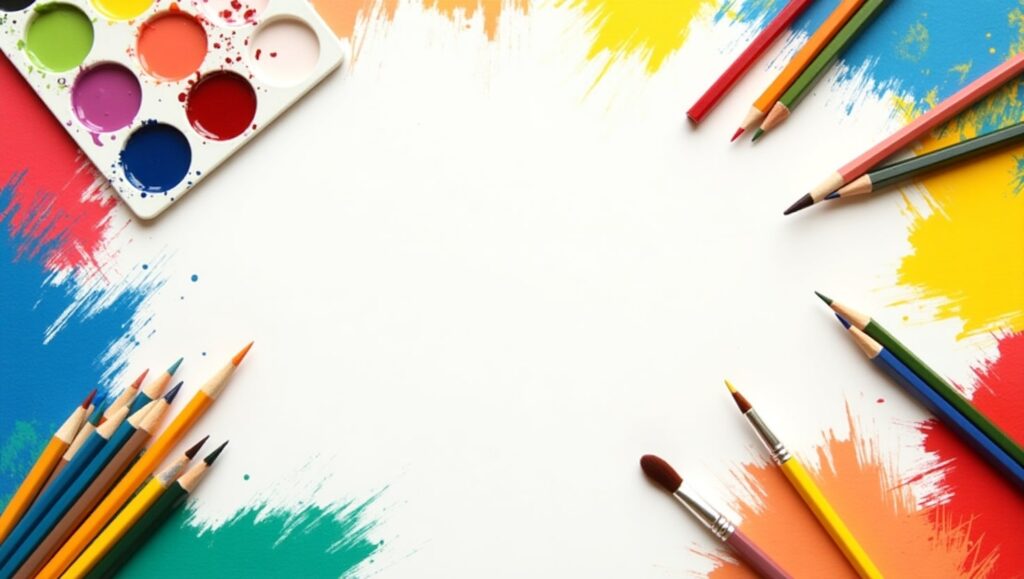
The color theory is very relevant in the area of painting t-shirts. Navigating a basic design with the compulsory color palette can turn a design to a work of art.
Know How to Select Colour:
- Take bold contrast by using complementary colors.
- Similar tints to bring out harmonious vibes.
- Apply white or black to make outlines/highlights.
Bear in mind that not all colors can be similar on textile and paper. Always test a small patch in case you want complete painting of t-shirt.
6. Use Fixing and Heat Fixing Methods
When you have painted your masterpiece that is the time to put the colors on so that they can be washed and worn.
T-Shirt Painting Design: Fixing Methods:
- Ironing: Apply a cloth or parchment paper on the painted area and press using medium heat setting on the iron within 3 to 5 minutes.
- Air-Drying: Leave your t-shirt painting design to dry up at least 24-48 hours.
- Heat Press: professional way of commercial-grade finish.
The paint is then sealed under the heat setting so it does not crack or fade, thus sealing into the fibers of your t-shirt painting design.
7. Care of Your Painted T Shirts
When the t-shirt painting is properly taken care of, then you get a long lasting life of the design and it remains vibrant.
Cleaning & Storing Information:
- Inside out wash in cold water.
- Never use bleach or strong detergents.
- Line dry or tumble low or machine dry.
- Iron inside-out, as required.
Once you have made something really well, you can be sure that your t-shirt painting design will keep shining all through the years.
Some Creative Ideas to Design T-Shirt Painting
Are you short of ideas? The popular t-shirt painting design themes are the following:
Minimalist Quotes
- Nature-based Patterns
- Graffiti and Street Style Painting
- The pop culture and Anime
- Geometric designs
- Motifs Tribal and Ethnic Motifs
- Personalized Name/Initials
The ideas can assist you to stimulate creativity and reach out to the target audience or customers.
The reason T-Shirt Painting Design is ideal with small businesses
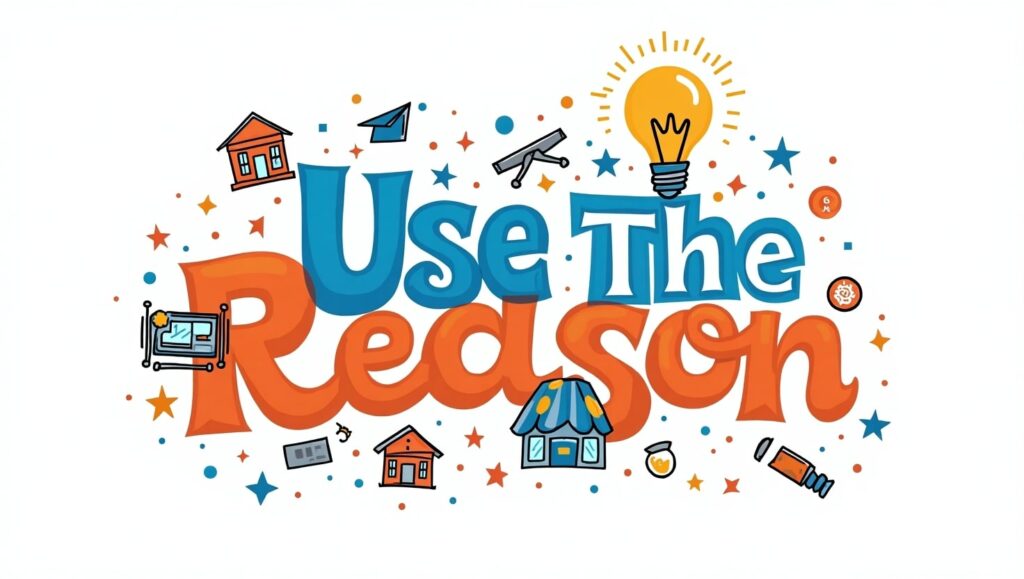
T-shirt painting design is also beautiful since the cost is cheap with high profit margin. These designers, painters, and designers are turning the ability to make money by selling personalized tees either online or in local fairs.
The advantages of T-Shirt painting Design as Business:
- No huge stock-out is needed.
- It is possible to tailor every design to the targeted niches.
- Handmade and green-friendly.
You may even provide customized t-shirt painting design services to such platforms as Etsy, Instagram, or your WordPress online store.
Questions and answers on T-shirt painting design
Q1. What should I use as a medium to paint t-shirt painting design, can I use normal acrylic paint?
Sure but in some fabric medium so that it does not crack and leave a soft finish.
Q2. How do I avoid loosing the paint in the washing?
After getting your paint design on your t-shirt completely dry, always take it and heat set it using an iron or heat press.
Q3. Which is the best color of t-shirt to be used?
T-shirts that are white and light in color are ideal for colored effects, but another to get dramatic effects is to use black t-shirts and use opaque or metallic paints.
Q4. What is the lifespan of painted t-shirt?
Well improvised t-shirt painting design will take a long time even after a lot of washings before it will begin to fade away.
Q5. Are children allowed to do t-shirt painting designs?
Absolutely! Just use paint that is washable and non toxic and monitor them as they set the heat.
Conclusion
The t-shirt painting design can be mastered by all types of artists, hobbyists, and business people. Selecting the appropriate fabric, preparing the design, printing it on, and employing the final heat fix, there are tips and methods to every process, which makes the result a beautiful and lasting t-shirt painting design. These 7 methods will determine what colorful and professional results you would achieve when creating a one-off work of your own or planning to launch a fashion brand.
The more you practice regularly and creatively, the more you will master t-shirt painting designs, and welcoming the world of art and even money.
Graphics Design
Essential Graphic Design Skill List for Freelancers
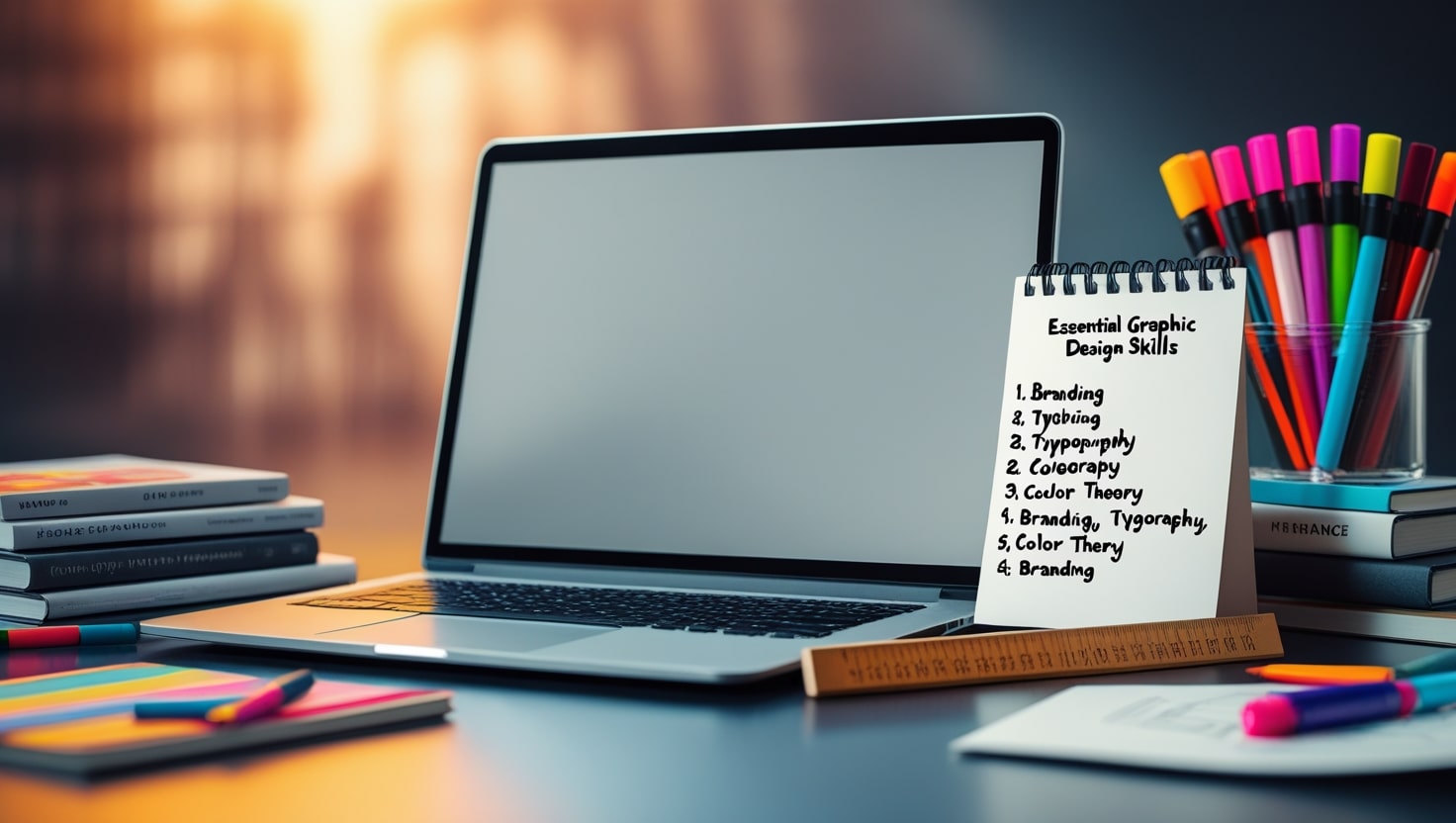
Essential Graphic Design Skill List for Freelancers
Graphic design skill list nowadays, it does not suffice to be a talented freelance designer in the way of the fast-moving creative economy. It demands balanced skill set of graphic designs that entails technical and soft skills. As a beginner or someone seeking to advance their career, being great in the basic graphic design skill list can also pave the way to greater clients, more money, and ultimate success in the relationship.
We will discuss all the skills you have to cover in your graphic design skill set, starting with basic tools and culminating in the skills required by a professional graphic designer. We will also discuss why these skills are important and how to master them as well as how to utilize them to get the right clients and projects depending on your expectations.
1. Graphic Design Skill List Introduction The Graphic Design Skill List is an important attribute of a Graphic Designer.
The graphic design skill list abilities that you have is your toolkit as a freelancer. It comprises all the knowledge about software along with thoughtful planning, interaction and communication with clients, and developing the identity of a brand. The fact that having a structured graphic design skill list list will not only enable you to analyze your capabilities as well as shortcomings, but also offer you easy time to sell your services.
The majority of businesses are heading towards freelance professionals to serve them with creative problems such that a present and relevant list of graphic design skill list will make sure that you stay ahead of others in this highly competitive industry.
2. The issue of acquiring a skill set among freelancers.

In contrast to agency designers, freelancers do not get the luxury of riding on a team. You are the designer, the project owner, the marketer and the communicator. Thus, it is vital to develop a rich and robust skill set of a graphic designer to your independence and development.
Having a comprehensive list of graphic design skill list also creates self-confidence among the clients. It demonstrates that you can also work with an impressive range of assignments: both coming up with graphic design skill list to place on social media and creating a whole brand identity.
3. The Basic Skills required by Every Freelancer in Designing
You should not run with sophisticated tools or some specific designs that you might be familiar with at an early stage. The basic list of the graphic design skill list comprises:
- Design principle (contrast, balance, alignment, repetition)
- Design of composition and layouts
- Visual hierarchy
- Simple form drawing or wire framing
- Thinking and problem solving design
These are fundamental aspects that these skills in professional graphic designing revolve around. In their absence, your visuals might not be coherent or even effective, regardless of their apparent visual attractiveness.
4. High-end Graphic Designing Techniques
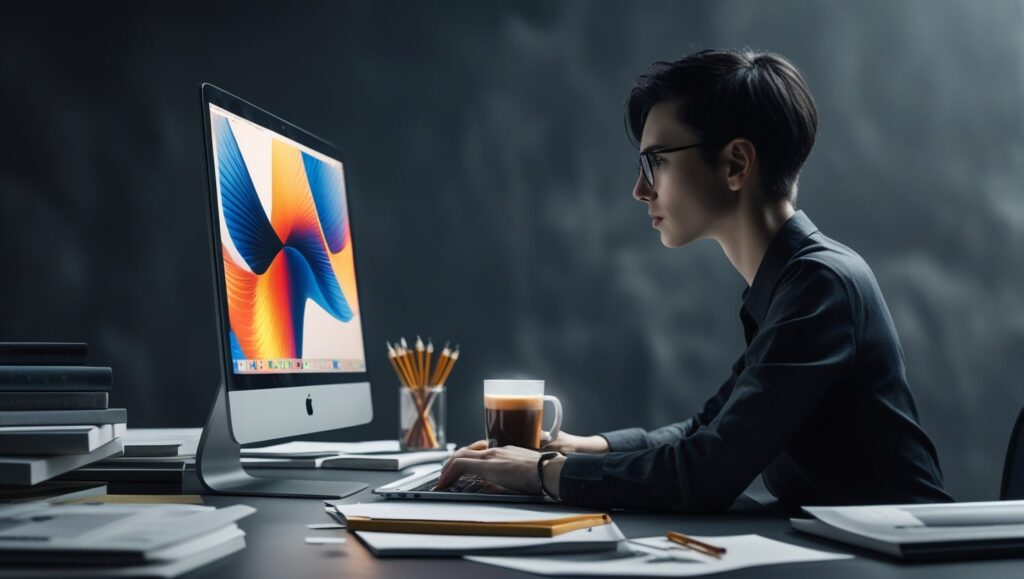
When you already managed to master the basics, it is high time to enter some more sophisticated elements of your graphic design skill list set:
- Photo manipulation and editing
- Vector drawing
- Icons design
- Infographic design
- The fine use of layering and masking
Such advanced skills will enable you to take on more involved projects such as packaging design, editorial layouts, or a digital campaign that will increase your worth as a freelancer.
5. The Accommodation Skill list of Graphic Design Software Proficiency

Your knowledge of some major design software is one of the most important elements of your graphic design skills list. As a freelancer you have to feel comfortable with the best tools of the industry:
- Adobe Photoshop: Digital painting and photo editing
- Adobe illustrator: Vector graphic and logo design
- Adobe InDesign: documents/publications with three or more pages e.g. brochures, eBooks
- Figma/Sketch/XD: UI/UX and Web Graphic Design
- Canva: Rapid template-based design Canva can be used to create beautiful templates in very little time.
The more tools you will be able to learn and to expand the list of tools on your set of skills of graphic design skill list the more you become versatile and employable.
6. Skills in Type and Design
Typography is also what it takes to make or break a design. When you combine this knowledge to your graphic design skill list set, then you comprehend:
- Pairing and contrast of fonts
- Space and legibility
- Typographical hierarchical use
- Balance in grids and layouts
This is why freelancers who are experts in typography are mostly recruited when encountered with branding, editorial, and advertising work where text is as equally important as imagery content.
7. Theory and practice in Color
The good design is very dependent on a proper color application. Ensure your skill set in graphic designing has:
- The knowledge of the color modes (RGB vs CMYK)
- Psychology of colors
- the palette making
- Harmony and contrast of color
Clients will usually wish to have their brand colors to elicit certain emotions and practicing color theory will help you add value to your company as a freelancer.
8. Branding and Image Design
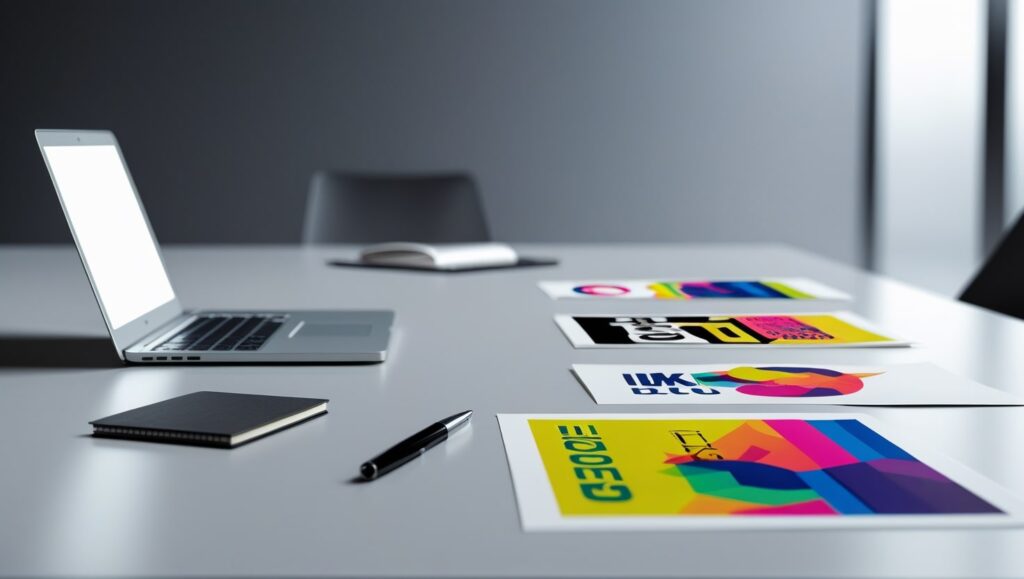
Branding expertise can help a freelancer earn good money on huge projects. To your list of graphic design skill list add the following:
- Logo designing
- Brand strategy and mood boards
- Brand guidelines
- Graphical narrations
Branding identities go beyond creation of logos but include deciphering how a company should communicate in terms of graphics; it is on the platform.
9. UX/UI Designing Skills as a Freelancer
Freelancers capable of providing UX/UI services are usually paid higher. Completing the list of your graphic design skill list with UX/UI means:
- Drawing wireframes and prototypes
- User journey mapping
- Designing mobile-first
- UI Design of the app/ Web
Such competencies are quite desirable with companies focusing more on digital user experience.
10. Motion Graphics and Animation
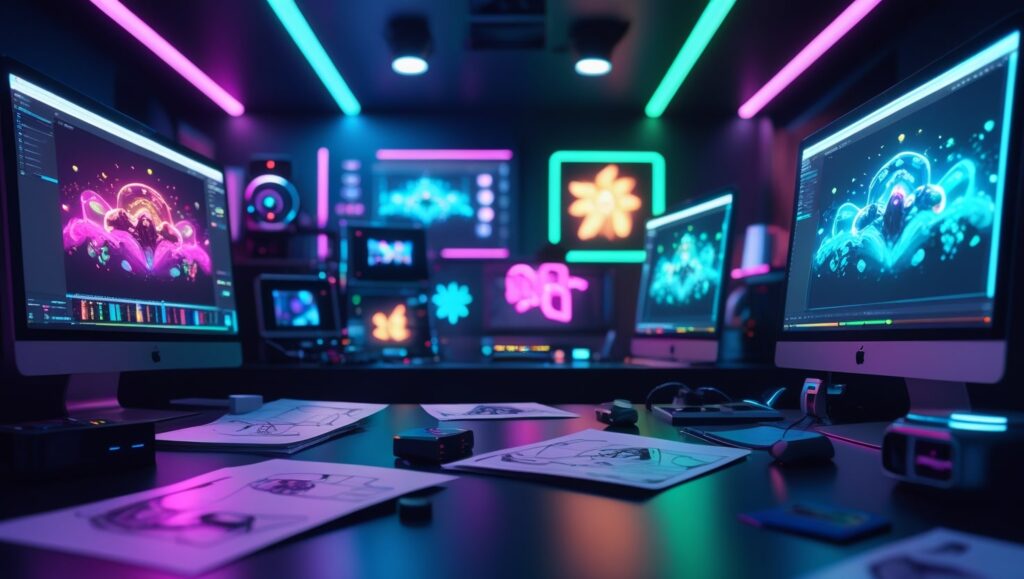
The digital space is taken over by motion. Motion design is something that sets you apart in the list of graphic design skill list. Get to know such tools as:
- Animations will be in After Effects
- Lottie on the web-based animations
- GIF making and video hacks
Even simple motion skills make a still stand, it allows creating a dynamic experience, ideal to share on social media and advertisements.
11. Collaboration and Communication skills
Soft skills are good elements of a graphic design skill list as well. You will have to be able to:
- An excellent skill at explaining things
- Know the needs of clients
- Treat feedback in a professional manner
- Liaise with other artists or marketers
Effective communication leads to the flow of work, improved success of projects and repeat clients.
12. Time and Project Management
Freelancers have to work on different projects. Time management should, therefore, find its place on the list of your graphic design skill list:
- Working with such an application as Trello, Notion, or Asana
- Maintaining due date and revisions
- Invoicing and ability to follow up clients
These are some of the productivity habits that enable you to be professional and you achieve expectations.
13. Marketing Freelance Designer
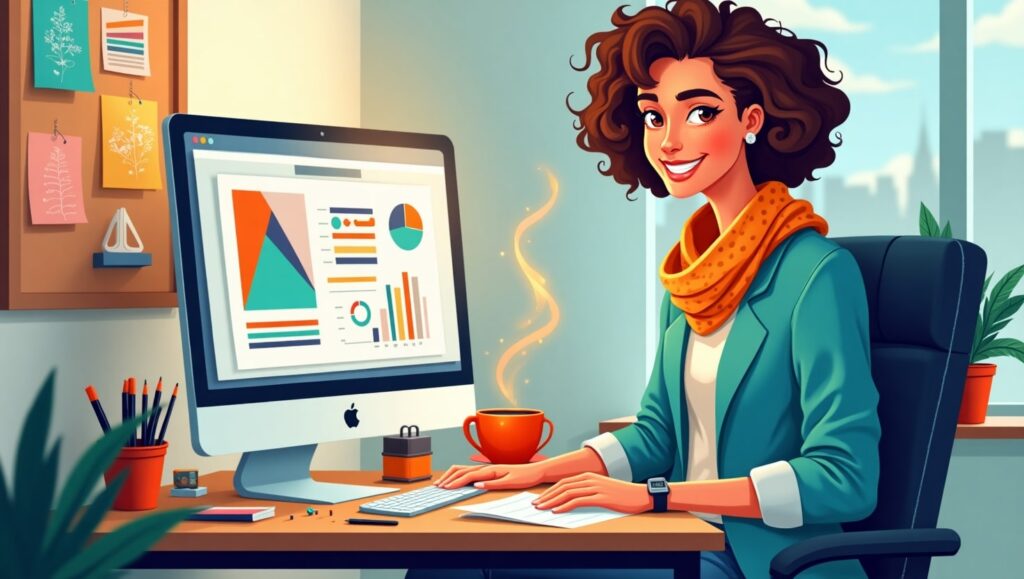
Self marketing is one thing that you never had to write on your list of graphic design skill list, but what you really need to do:
- Creation of a portfolio site
- Sharing work via social media
- Authorship of blogs or case studies
- Social networking on the web
The greatest designers cannot cope, when they are not visible. Marketing converts your talents into money making.
14. Your Application of Graphic Designs List in the Real World
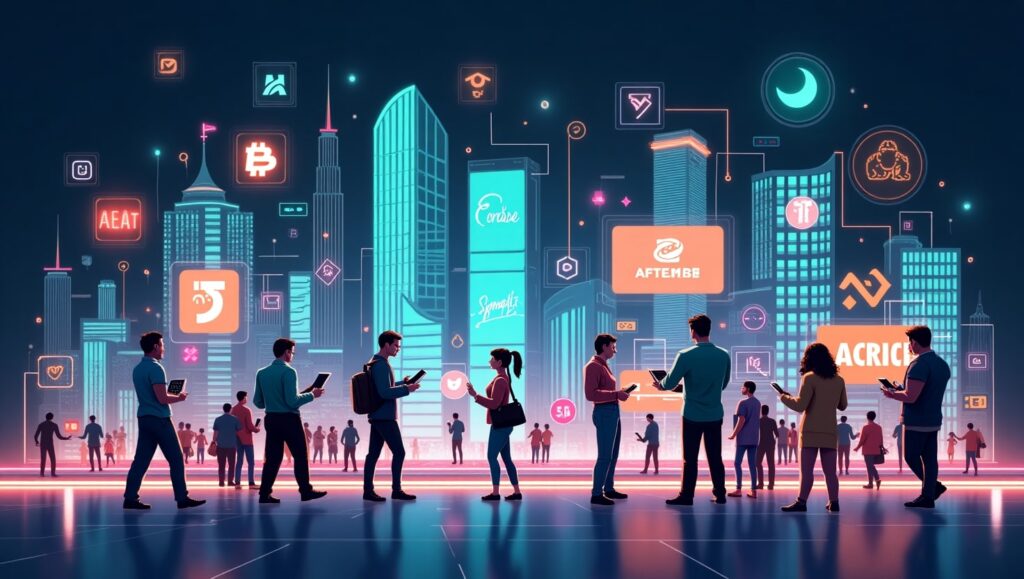
Your graphic design skill list should match the demand in the market. Put your abilities to:
Branding and logo assignments
- Designing of websites
- Digital advertising resources (ads, banners, email)
- Printed resources (flyers, business card)
- e-commerce Designs of products
A variety in the application of your graphic design skill list also enhances your reputation and gets a variety of clients.
15. What are the Ways of Developing Your Skill Set Continuously?
The artistic world is evolving rapidly. Make sure your graphic design skill list is not obsolete by:
- Doing online courses (Skillshare, Coursera, YouTube)
- Research of design fashion
- Doing it every day
- Asking another peer or even a mentor
The best freelancers are those who never stopped learning. Each new skill that you develop can translate to work that is of higher value.
16. FAQs
Q1. What must be in freelance graphic design skill list?
The freelance graphic design skill list must enroll software expertise, design philosophy, branding, constructing, user interface/user experience, commitment management, and organizational communicational proficiency.
Q2. What can I do to add to my list of skills in graphic design?
Continuously expand your list of graphic design skills by taking online courses, working on real-life projects, keeping up with design trends, and learning more through feedback by your mentors.
Q3. What is the importance of a graphic design skill list to freelancers?
It will make you competitive, versatile, and allow you to gain trust by potential clients because it will be evident what you are able to provide.
Q4. Is it possible to freelance when my graphic design list of skills is not very long?
Yes, but it will be limited by what you can do. Begin with the basic skills and slowly increase your freelance career with some extended skills list in graphic design.
Q5. Which skill is the most needed in a list of graphic designs skills today?
The same goes with UX/UI design, motion graphics, and branding opportunities that are highly sought as freelance assignments.
17. Final Thoughts
This is the most valuable resource a freelancer can have a checklist of graphic design skills. Not only will it make your work better, but it increases your confidence and credibility as well. With the combination of technical and soft skills you will become a trustful and multi-tasking designer that clients would not mind hiring again.
You are about to have a fresh start or a long time established and it is your time to look back, improve, and add some new things to your list of graphics design skills. It is a fact that success lies in the hands of those who are well equipped- so develop your talents, present them in a way they are attractive, and keep stretching your creative boundaries.
-
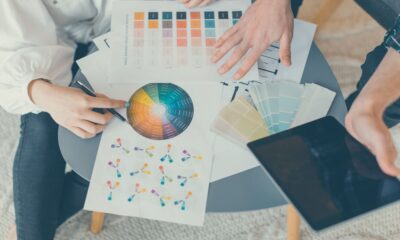
 Graphics Design1 year ago
Graphics Design1 year ago7.Exploring the Importance of Color Theory Charts
-

 Graphics Design10 months ago
Graphics Design10 months ago10 Stunning Gradient Design Trends You Need to Know in 2024
-
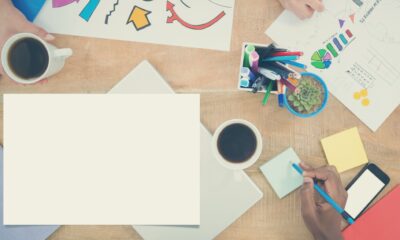
 Graphics Design1 year ago
Graphics Design1 year ago15.The Importance of Effective Flyer Design in Marketing
-
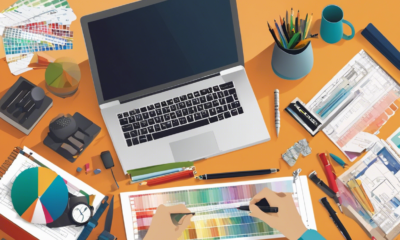
 Graphics Design1 year ago
Graphics Design1 year ago14.Mastering the Art of Print Design: Tips and Tricks
-
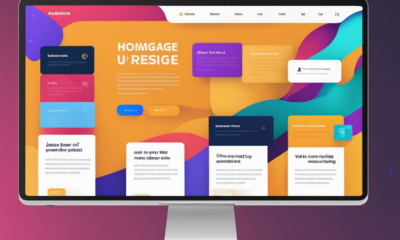
 Graphics Design1 year ago
Graphics Design1 year ago10.The Latest Trends in Web Design and Development
-

 Graphics Design1 year ago
Graphics Design1 year ago29.Retro Design Is Making a Comeback in Modern Spaces
-
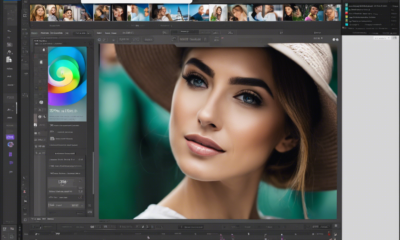
 Graphics Design1 year ago
Graphics Design1 year ago13.Exploring the Latest Trends in Photo Editing Software
-
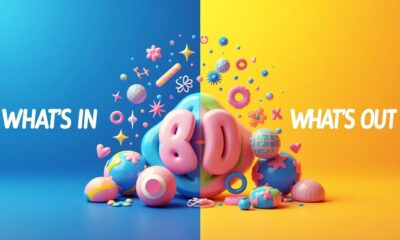
 Graphics Design5 months ago
Graphics Design5 months ago2025 Logo Design Trends: What’s In, What’s Out?




